16 Stylish Hairstyles with Dyed Locs You’ll Love
Dyed locs change the frame of your face and the feel of your look. This guide lists practical, wearable ideas for stylish hairstyles with dyed locs—straightforward, low-fluff, and focused on how to achieve each style and when it works best.
Loose shoulder-length locs with face-framing color
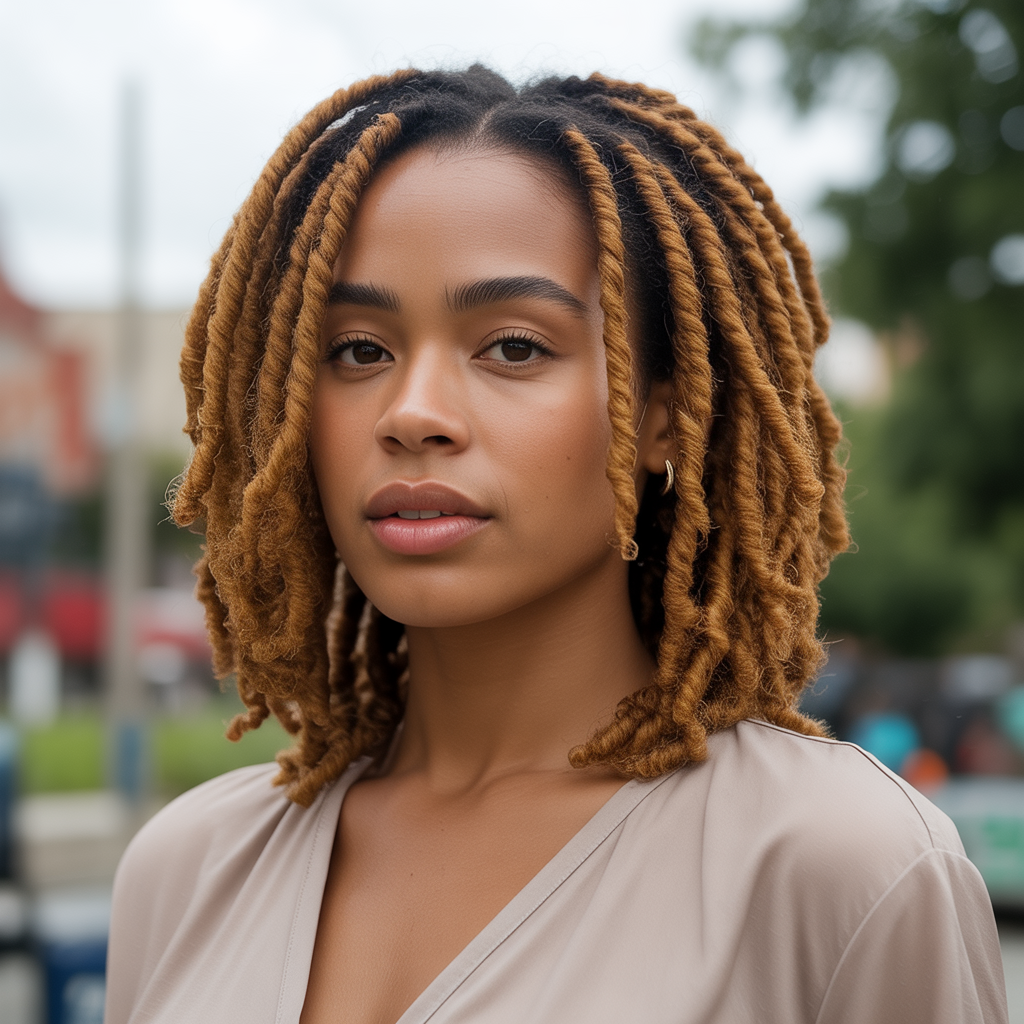
Keep locs loose and let lighter dye shades highlight the strands that sit near your face. This draws attention to cheekbones and eyes without heavy styling. Low manipulation: twist a few front locs back with small pins for a tidy finish.
High pony with wrapped base
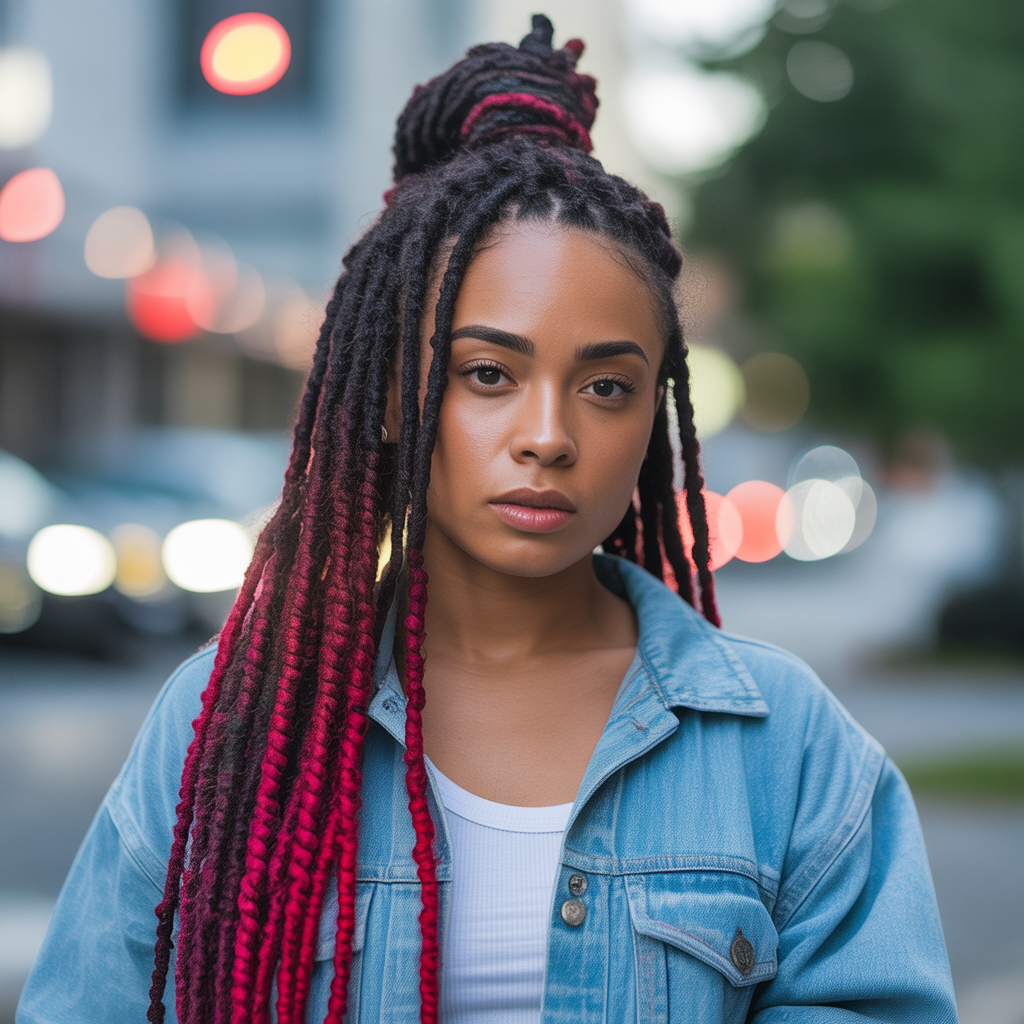
Gather locs high at the crown and wrap one colored loc around the base to hide elastic. The wrapped band becomes a deliberate accent when dyed a contrasting tone. Good for active days and quick polish.
Stylish Hairstyles with Dyed Locs Half-up topknot
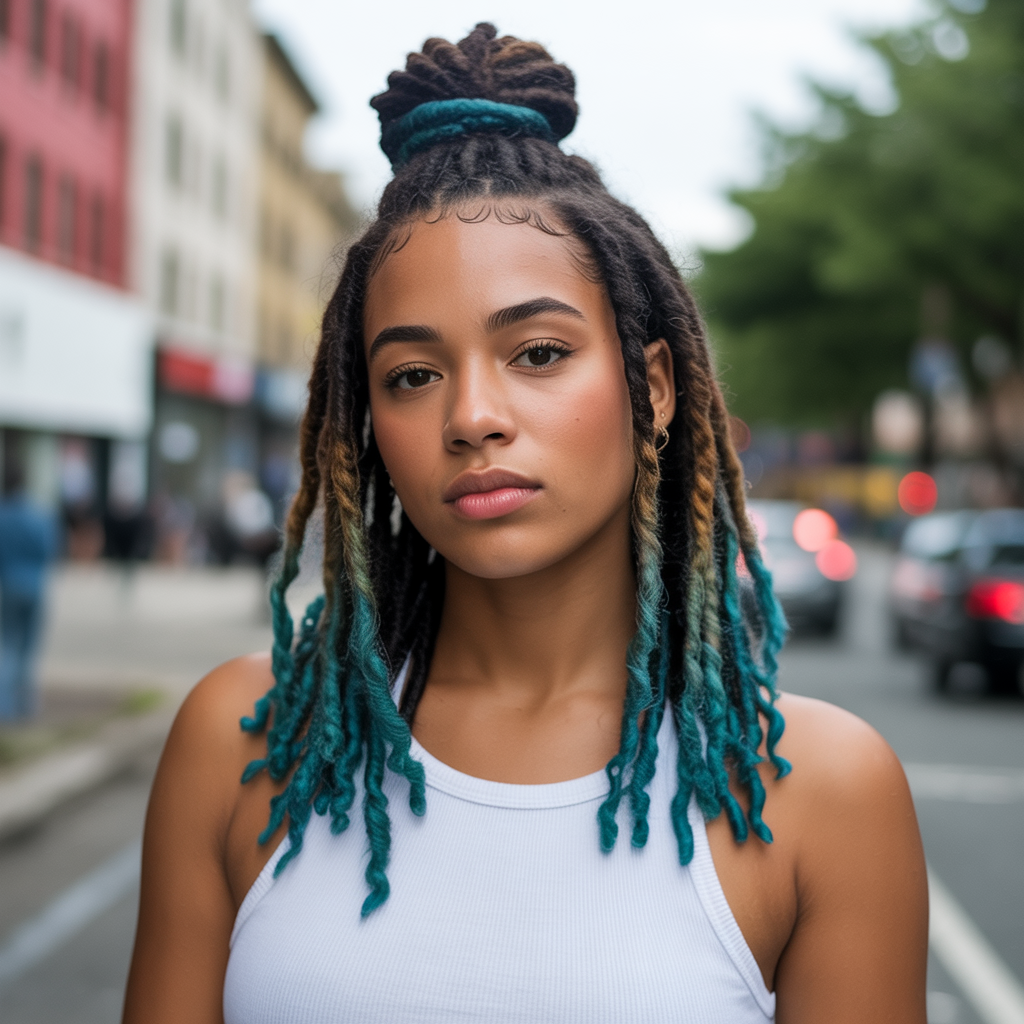
Pull the top half of locs into a compact knot and leave the rest down. Use a bright dye at the knot or tips to add depth. Works on medium-to-long locs and keeps the face open.
Side-swept locs with low tuck
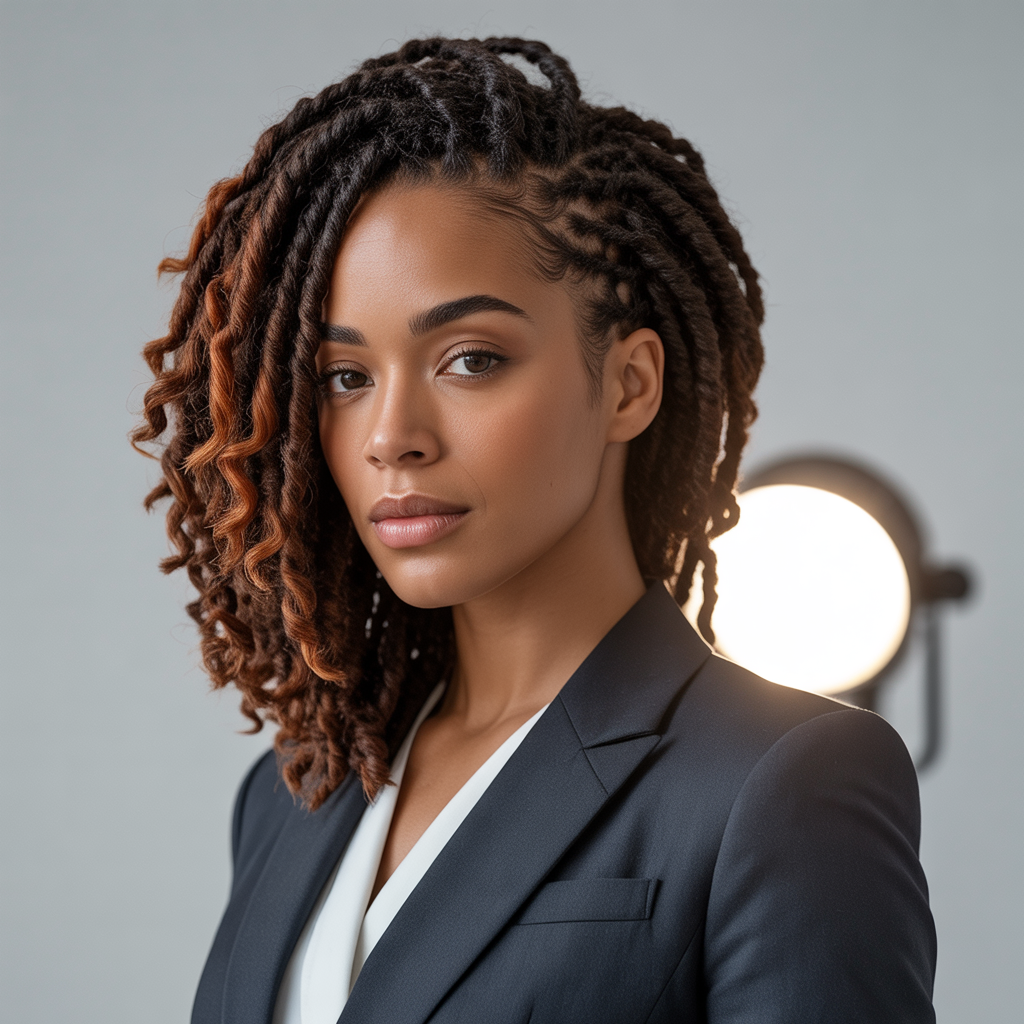
Sweep locs across one shoulder and tuck ends behind the ear or into a low pin. A darker root with dyed mid-lengths or tips looks natural and staged. Easy, elegant, and office-appropriate.
Low bun with twisted crown
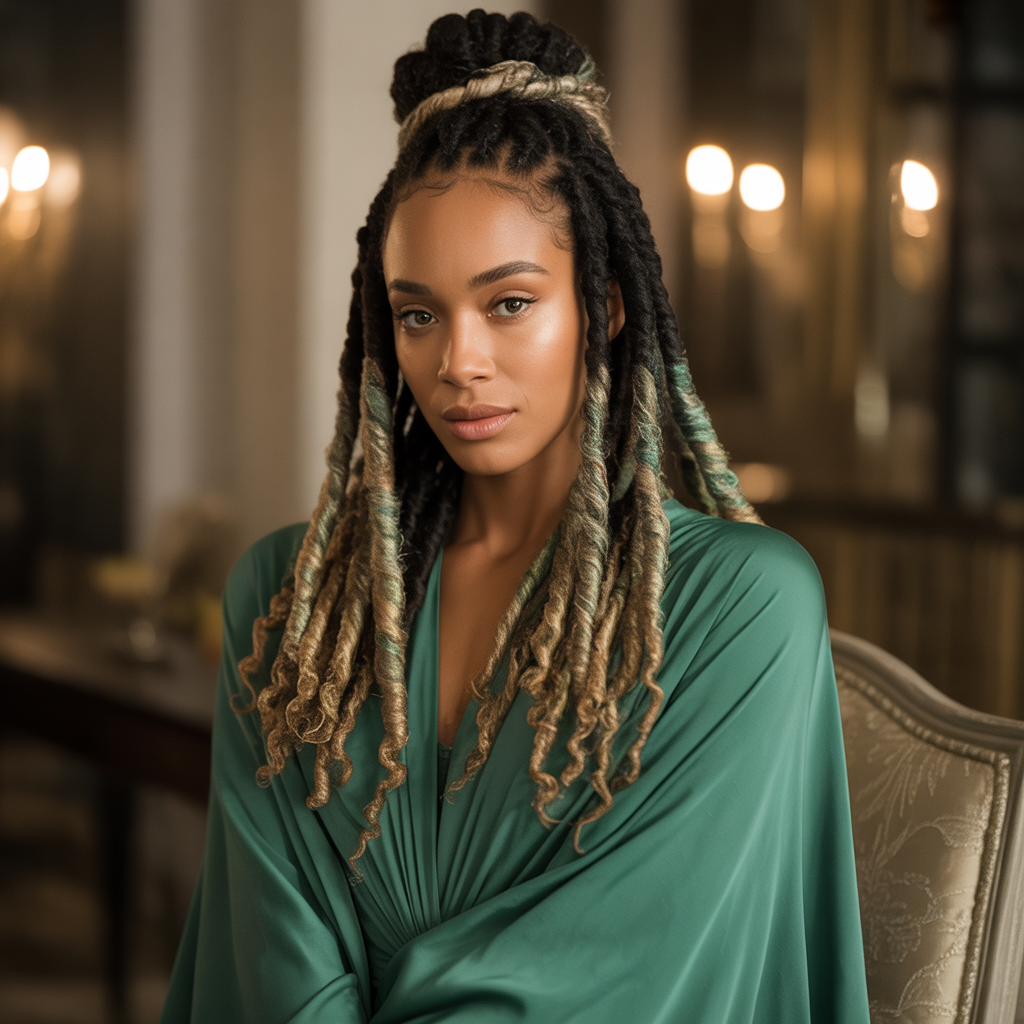
Create a low bun and twist several locs into a crown at the hairline. Dye can be applied to the twists only for an understated peek of color. Low tension if twists are loose.
Braided loc half-style
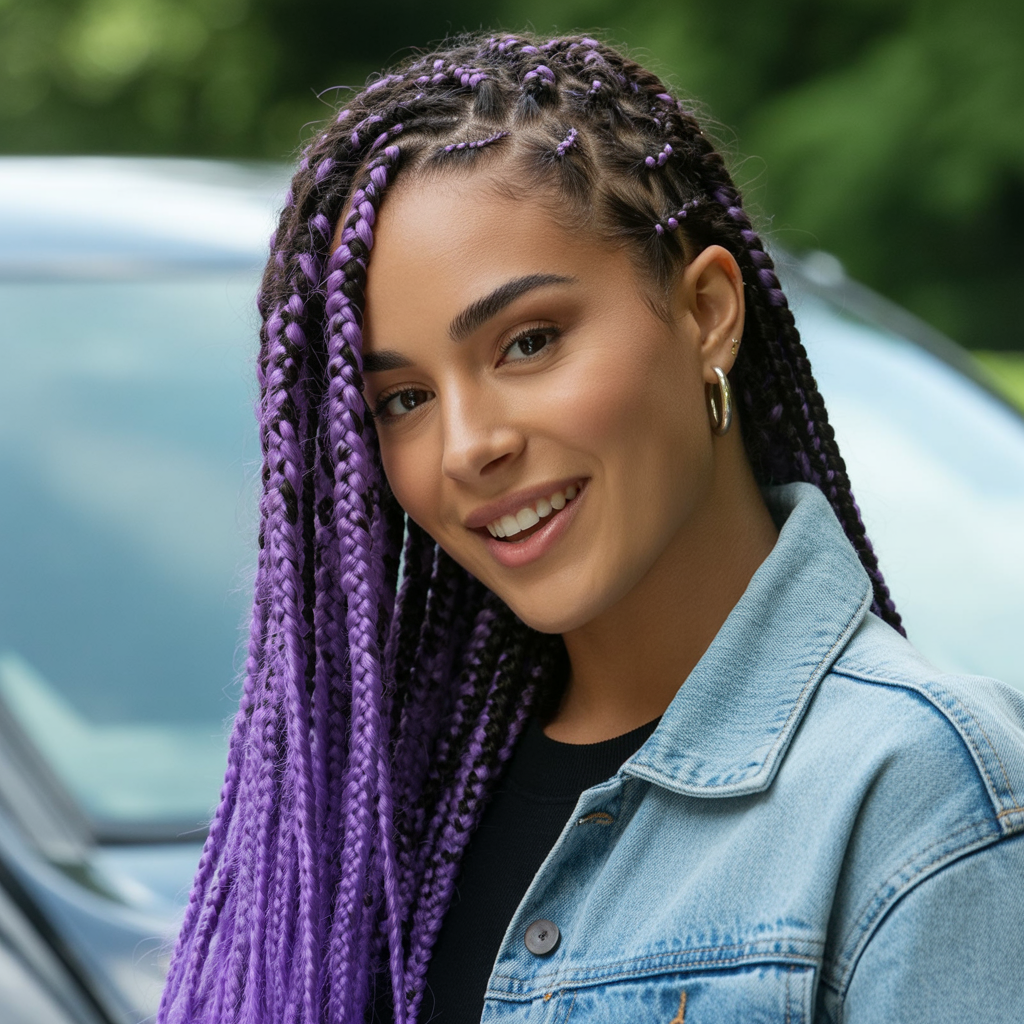
Braid a few dyed locs from temple to crown then secure. The contrast braid reads as a deliberate accent rather than full-head color. Suits any face shape; minimal upkeep.
Color-blocked tips
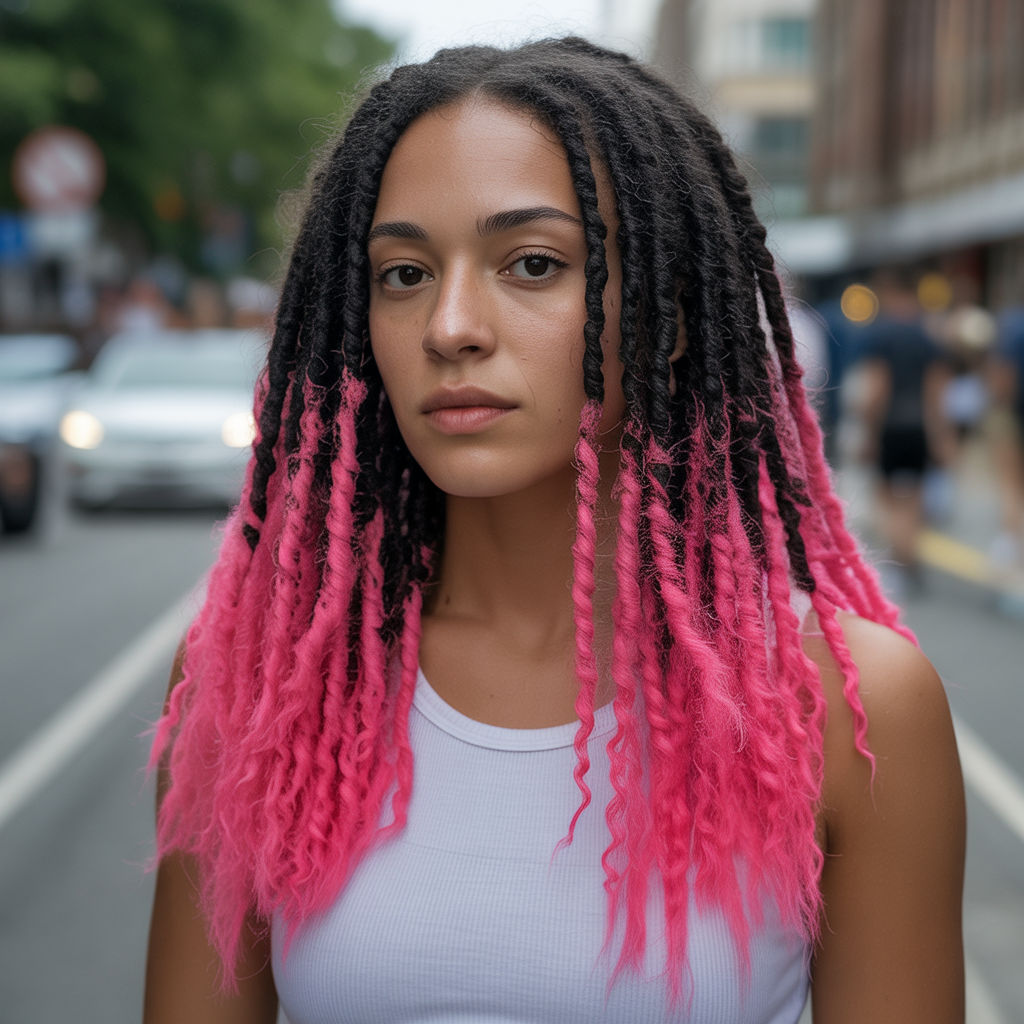
Leave roots natural and dye only the tips in a bold shade. This maintains scalp health and gives a modern, youthful edge. Wear loose or pull into a simple bun to show the blocks.
Faux hawk with tapered sides
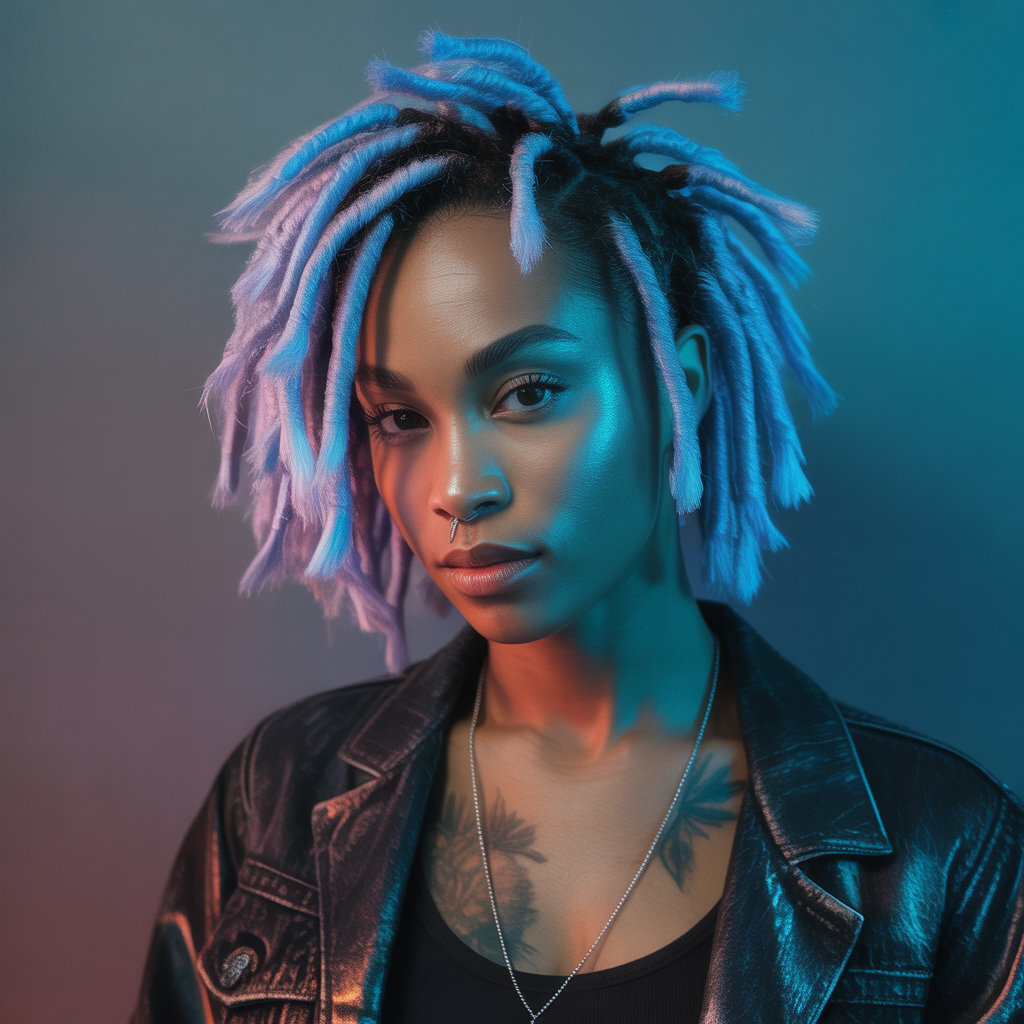
Gather locs to the center top and secure; keep sides tighter or tapered. Bold dye around the center strip emphasizes the hawk line. Works well with medium-length locs and a confident wardrobe.
Low side pony with draped locs
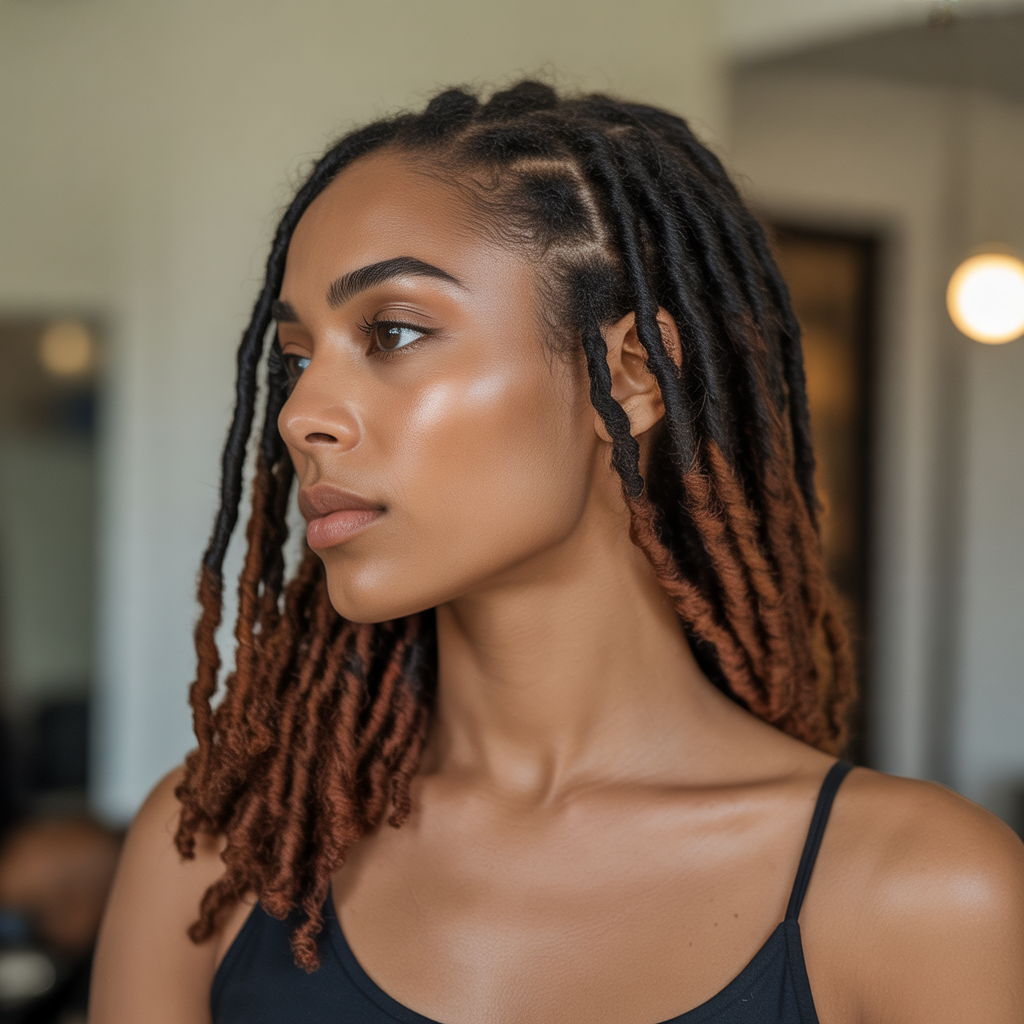
Pull locs to one side low at the nape and let them drape. A subtle ombré from root to end reads soft and controlled. Useful for formal events where movement matters.
Accessories-forward look
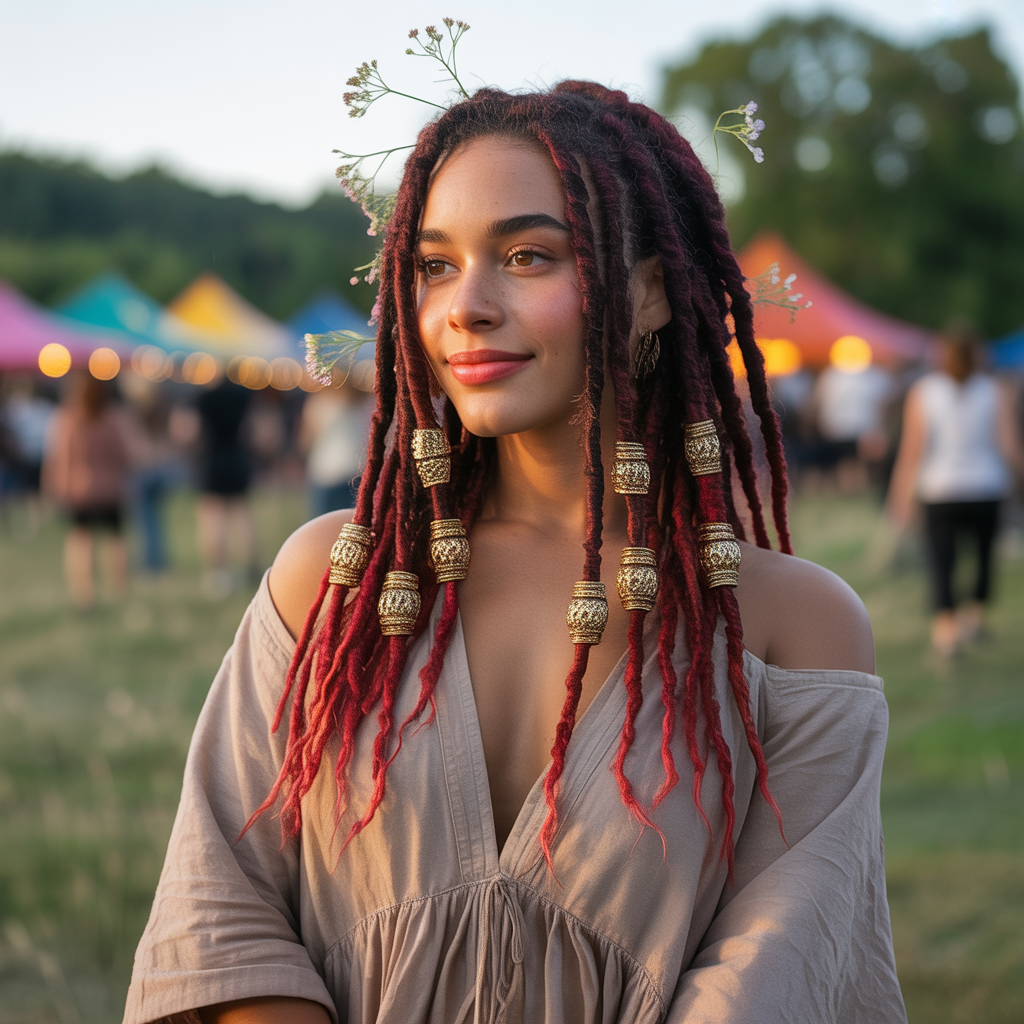
Use beads, cuffs, and metal rings selectively on dyed locs. Match accessory finish to the dye tone for coherence. This method personalizes any base style with minimal restyling.
Double buns
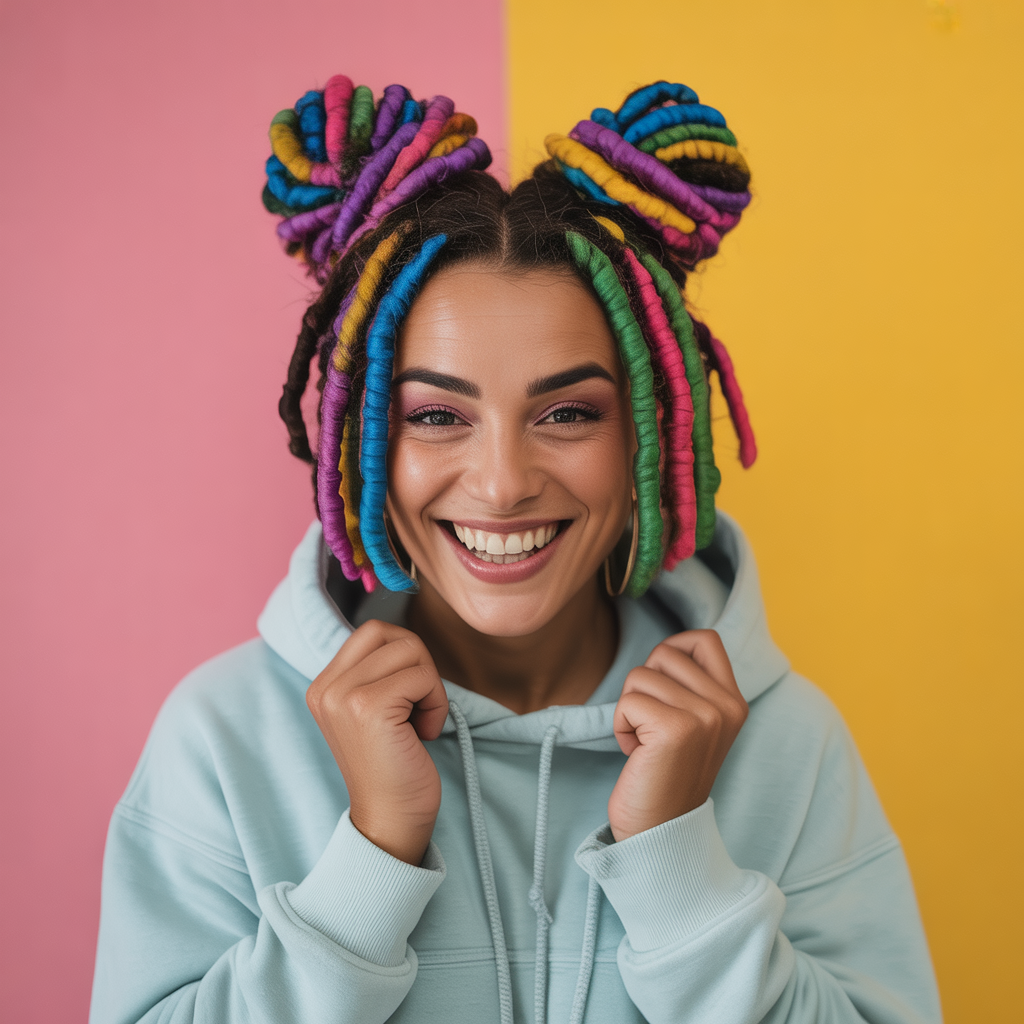
Split locs into two sections and form buns on either side. Dye can be mirrored or asymmetrical between buns for a playful effect. Practical for warm weather and stage-ready looks.
Sleek pulled-back style
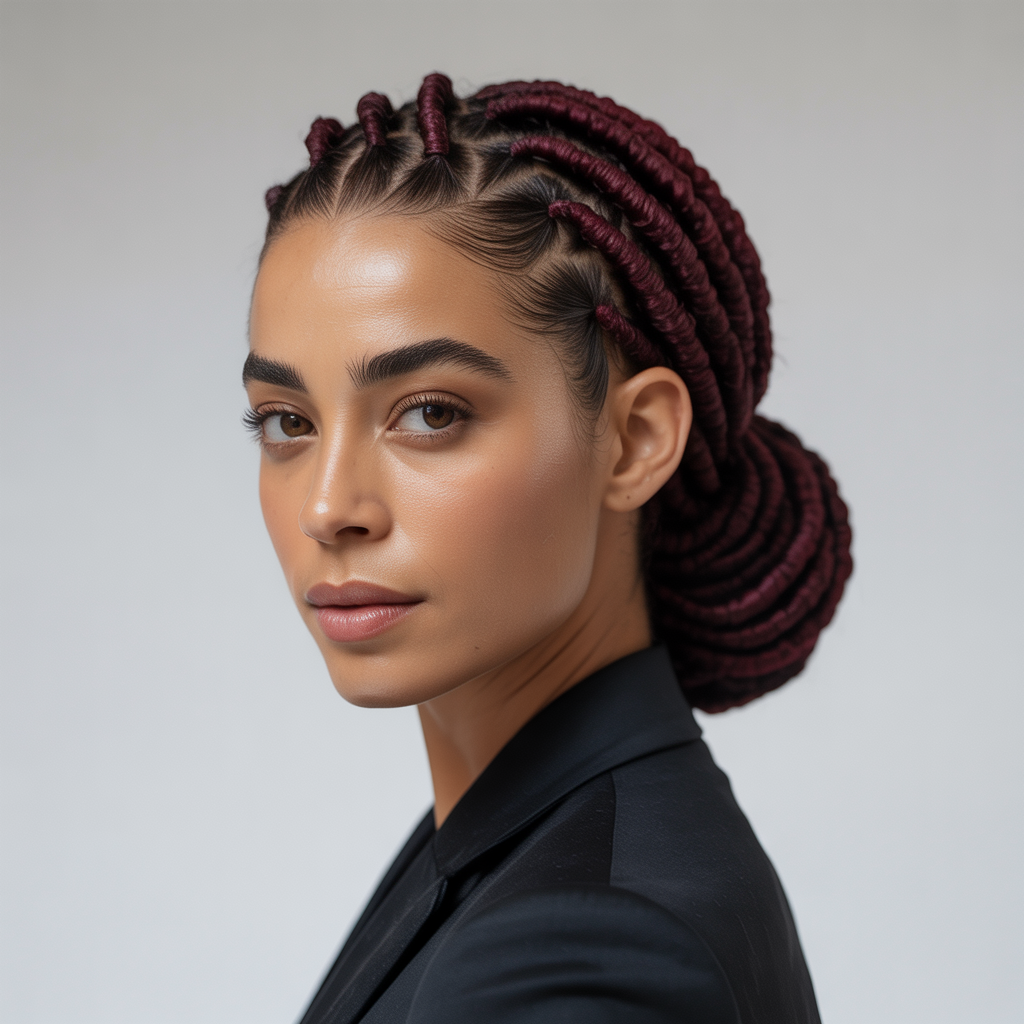
Pull dyed locs tightly back into a smooth low pony or bun; use edge control for a polished hairline. Color accent appears stronger when the silhouette is clean. Good for professional settings.
Twisted updo
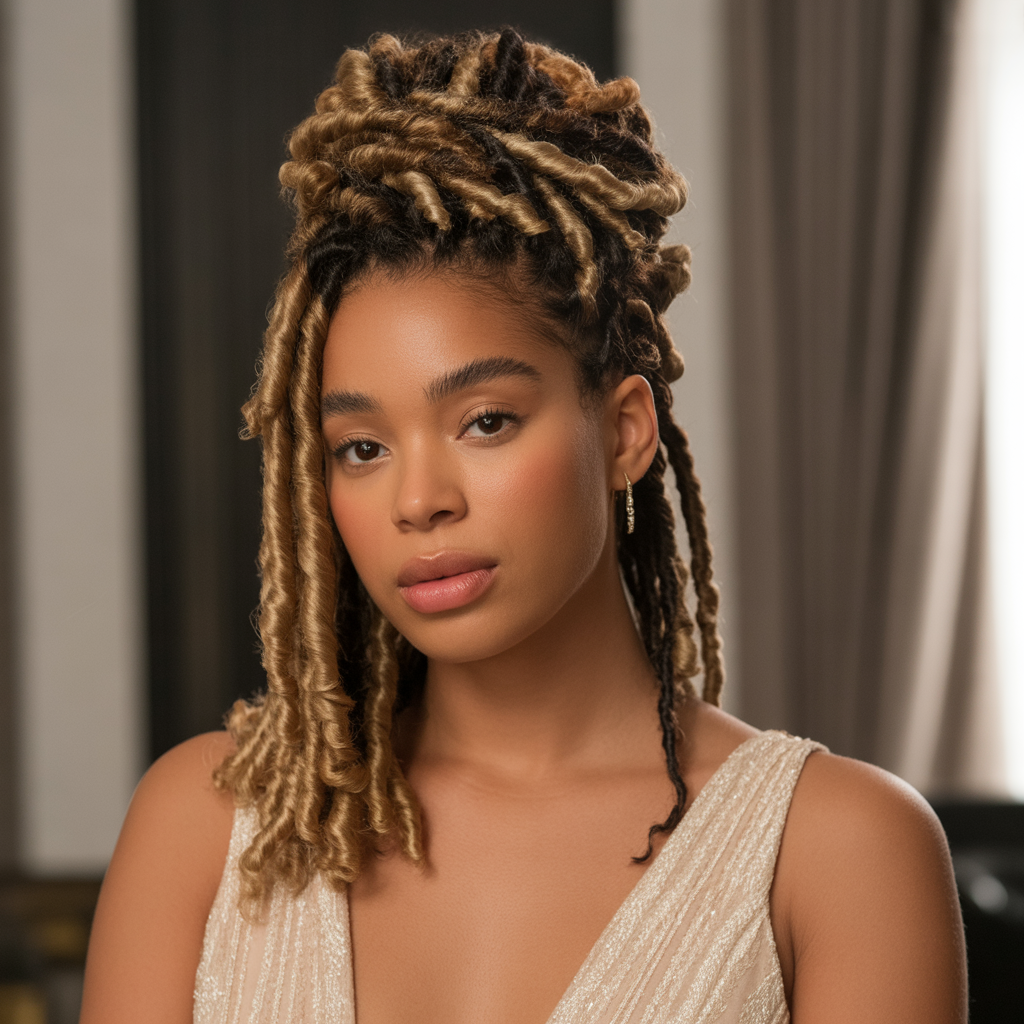
Twist locs together and pin into an irregular updo. Highlight selected twists with brighter dye to create depth and motion. This style hides uneven lengths and looks deliberate.
Layered length with feathered ends
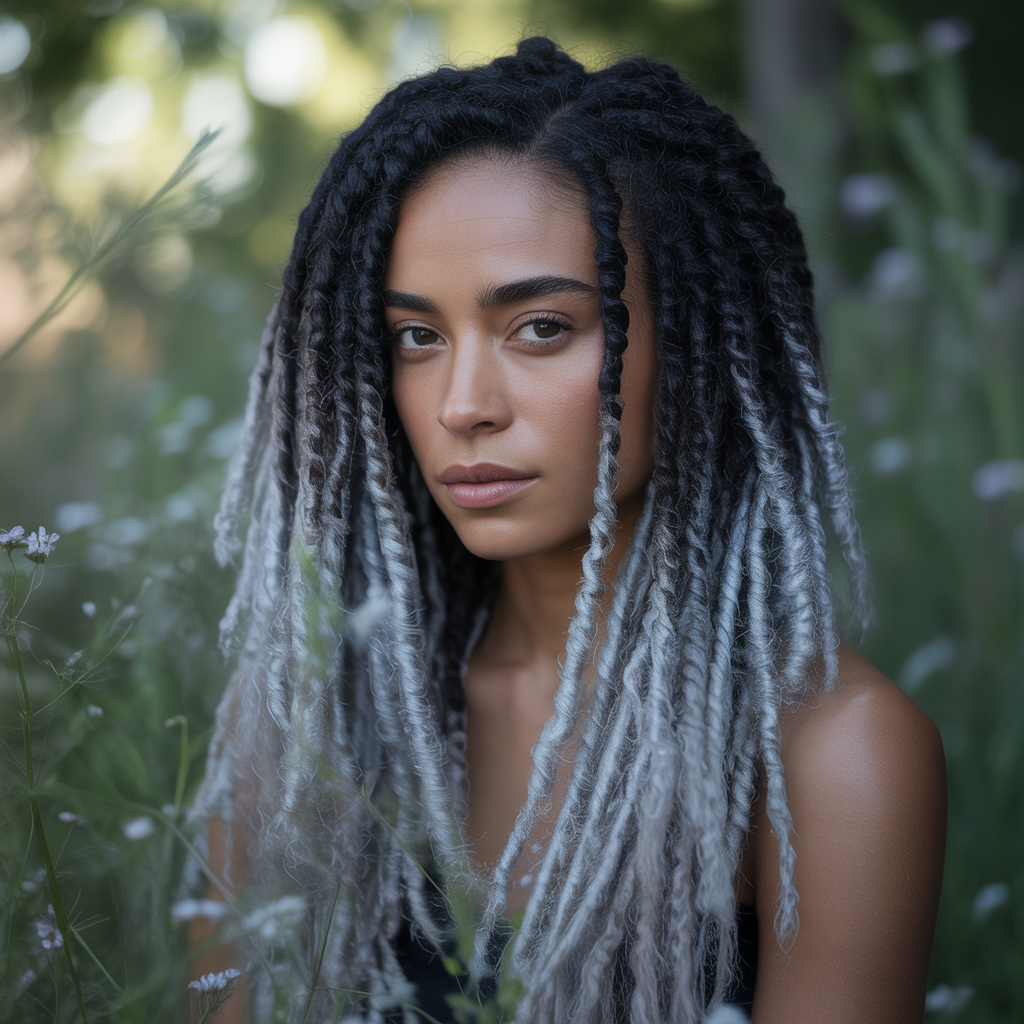
Trim loc tips to create a feathered silhouette and dye in graduated tones. Movement reveals the gradient. Best on long locs; keeps styling minimal while appearing refined.
Statement part with contrast color
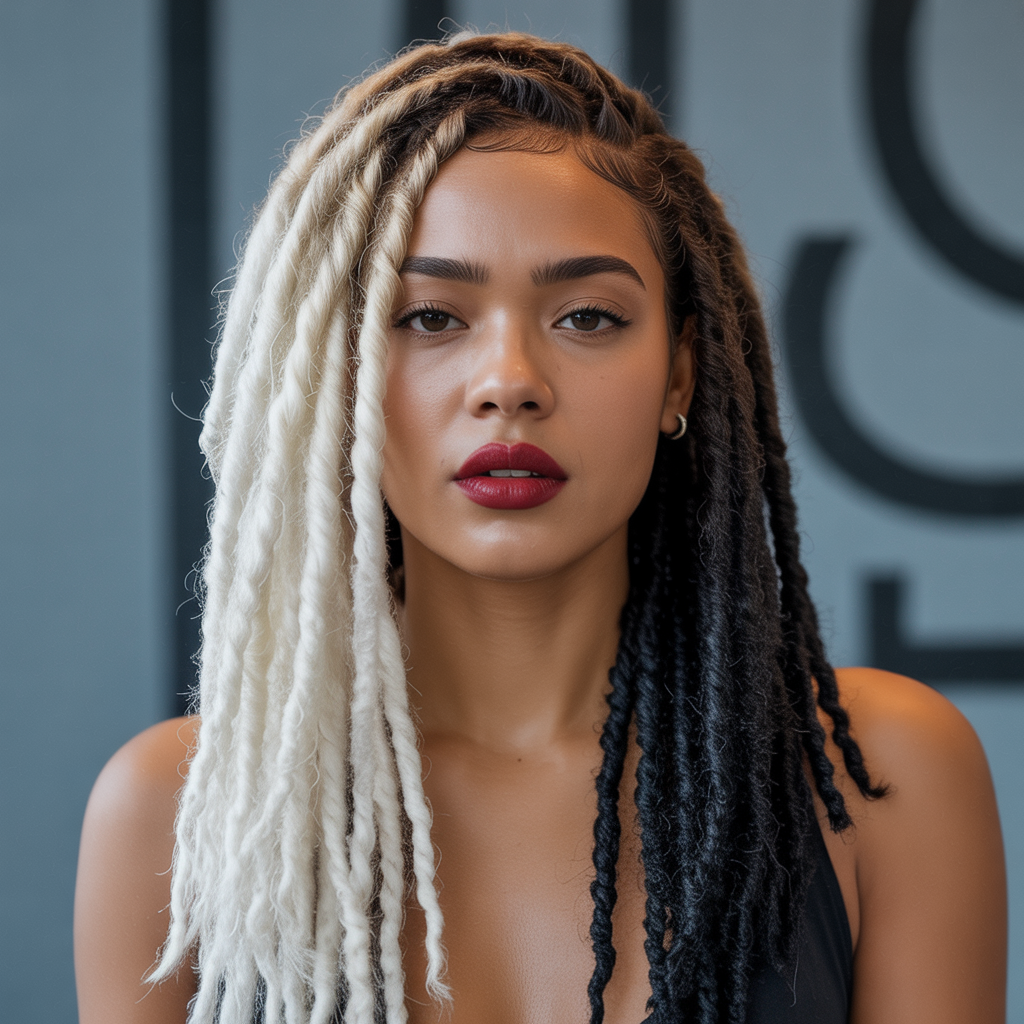
Create a deep part and dye locs on one side a contrasting shade. The asymmetry is modern and requires no daily effort beyond maintaining the part. Low-maintenance visual impact.
Wet-look locs
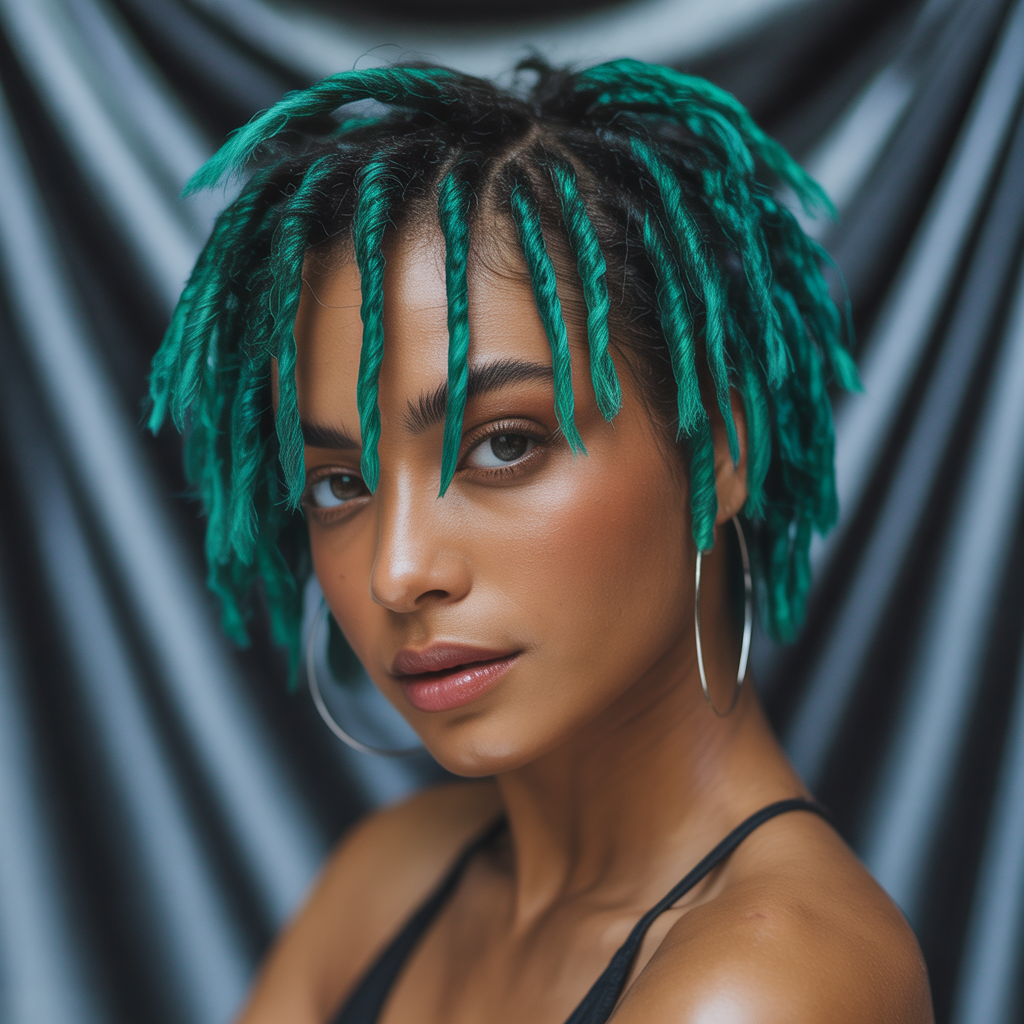
Apply a gel or oil lightly for a defined, glossy finish that shows dye saturation. Suitable for short to medium locs. Reapply as needed; avoid heavy buildup near the scalp.
FAQs
Will dyeing locs weaken them?
Dyeing can stress hair, especially with bleach. Use professional techniques, avoid overlapping bleach, and deep-condition regularly. Targeted dyeing (tips or selected locs) reduces overall risk.
How often do dyed locs need touch-ups?
Touch-up frequency depends on color, growth, and maintenance—typically 8–16 weeks for bright shades. Low-maintenance approaches (tips, ombré, or partial color) need less frequent work.
Can I dye locs at home safely?
Yes, if you choose semi-permanent dyes and avoid harsh bleach. Test a single loc first. For dramatic color changes or full-head bleach, consult a stylist experienced with locs.
How do I keep dyed locs from fading?
Wash less frequently, use sulfate-free shampoo, rinse with cool water, and use color-safe conditioners. UV protection and avoiding excessive heat styling help preserve tone.
Will dye show differently on locs than on loose hair?
Yes. Locs absorb and display color unevenly due to density and prior treatments. Expect a textured, dimensional result; strategic placement of dye gives the best controlled effect.
Conclusions
Dyed locs offer a wide range of looks from subtle to bold. Choosing targeted techniques—tips, face-framing strands, or accessory accents—lets you change style without constant full-head maintenance. Prioritize hair health: avoid repeated full-head bleach, use professional services for major changes, and maintain moisture.
Final Thoughts
Keep styling simple. Pick one or two focal points for color and one go-to style that fits daily life. That yields stylish outcomes with less upkeep and lower risk to the locs themselves.






